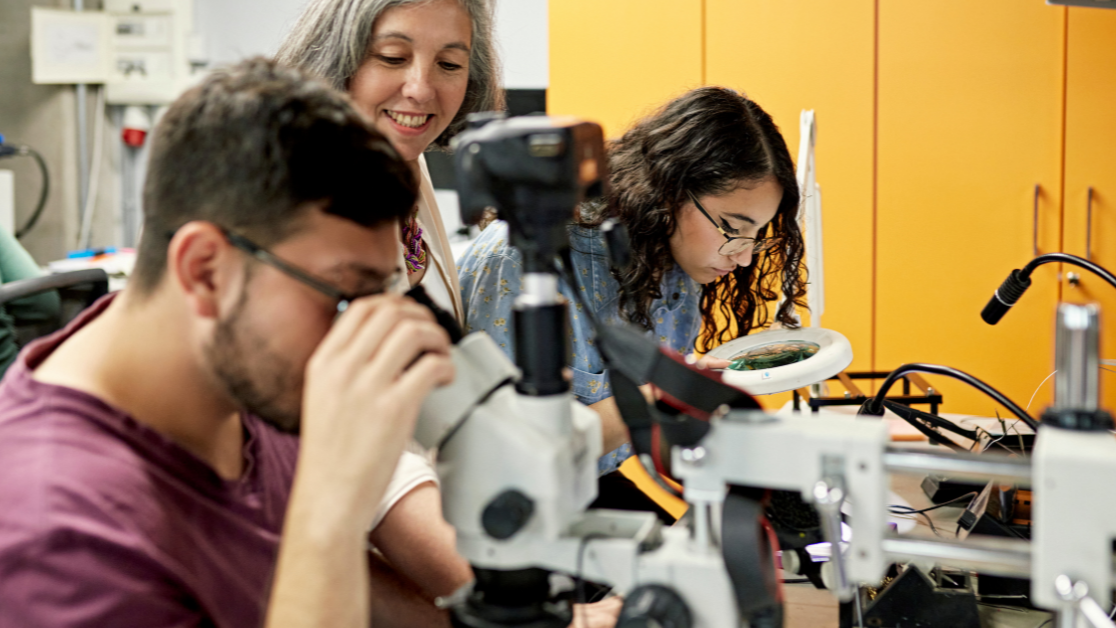Here at American Student Assistance (ASA), a national nonprofit at the forefront of changing the way kids learn about careers and prepare for their futures, we often say “you can’t be what you can’t see” when we discuss career exploration and education. With over 65% of high schoolers and recent high school graduates feeling like they would have benefitted from more career exploration in middle and high school, it’s clear that surface-level career education opportunities aren’t enough. Learners need to not just know what fields are out there, but which ones are lucrative, lead to long-term careers, aren’t threatened by automation, and offer many differing career opportunities.
To that end, Getting Smart took the opportunity to expand on what a career in the field of Health Sciences could look like in their whitepaper, “Health Science Pathways,” their first in a series of career-specific pathways guides from their ASA-sponsored “New Pathways Handbook.”
Join us as we dive into what Getting Smart has to say about a career in Health Sciences, why it’s a valuable pathway, its potential for expansion, how we can implement relevant career exploration opportunities, and what schools, institutions, and organizations are doing it right.
Why Health Sciences?
Why did Getting Smart opt to highlight the Health Sciences industry in this whitepaper? One reason is that despite the increasing and clear demand of workers in this field, few students know about roles outside of doctors and nurses, meaning that learners uninterested in a postsecondary education in medicine (or at all) may write off a career in this industry without knowing about all the options that are available to them. In fact, many jobs in the Health Sciences do not require a four-year degree. Another benefit of this field is that most jobs are not at risk of automation, adding a layer of job security to this field.
Additionally, the amount of open positions and projected growth within the field makes Health Sciences a great choice as a potential career pathway and lends itself to opportunities to grow. In fact, there are an estimated two million open healthcare industry jobs, and an additional two million expected by 2031, meaning that these roles will need eager and informed young people to fill it – and soon.
Health Sciences comprises many different career pathways that are not simply doctor, nurse, or surgeon. Industries within this field include:
- Biotechnology and Pharmaceuticals
- Healthcare Services
- Public Health
- Medical Devices and Equipment
- Health Informatics and Information Management
- Research and Development
- Mental Health Services
- Rehabilitation Services
- Long-term Care and Support
In addition to the many opportunities young people can choose from, they can also opt to forge their own path and pursue entrepreneurship in this field. In fact, new developments in technology and the ever-changing needs of the industry and those that need care means that Health Sciences is ripe for “entrepreneurial disruption.” Entrepreneurship opportunities in this sector include (but are not limited to):
- CRISPR Technology Applications
- Telehealth Platforms
- Healthcare IT Solutions
- Health and Wellness Retreats
- Environmental Health Solutions
With the amount of variety and opportunity Health Sciences provides, it’s clear that this sector can offer young people lucrative and long-lasting careers. The next step is figuring out how we can make them aware of this and get them interested in exploring and potentially pursuing a career in this field.
How can we spark interest in young people?
There are several ways to create interest in young people and encourage retention in Health Sciences programs. One such way is credentialing, like in Missouri, where schools have identified five micro-credentials in biotech that can be earned as early as freshman or sophomore year of high school. They not only provide students with real-world experiences, they also help them earn a higher wage, be competitive in the job market, and help them learn what they like and don’t like earlier. Some licenses, pre-licenses, and credentials high schoolers may earn are:
- CPR and First Aid Certification
- Medical Scribe Training
- Certified Phlebotomy Technician
- Certified Patient Care Technician
- Certified Patient Care Technician
- Certified Electrocardiography (EKG) Technician
- Cardiopulmonary Resuscitation (CPR) Certification
Missouri schools serve as an example of how educational institutions can encourage young people to engage in Health Sciences career education through hands-on certification and licensing programs. We also know that it’s not enough to just focus on teaching biology or chemistry, but we must instead focus on creating immersive, hands-on experiences that educate kids on the real-world impact of the Health Sciences field.
Through partnerships with local hospitals, research projects with universities, technology-driven simulations, and using the Allied Health Core Curriculum, students can gain essential skills and learn about what they want their career journey to look like. In addition to organizations like the Kauffman Foundation and Bloomberg Philanthropies and the CHIPS and Science Act, schools have been able to expand their offerings in STEM and Health Science career exploration opportunities.
The white paper dives into several schools that are examples of exemplary integration of innovative approaches to preparing students for careers in today’s and tomorrow’s healthcare industry through hands-on learning experiences, dual enrollment opportunities, and certifications. They include:
- Del Lago Academy
- Ballard High School
- Michael DeBakey High School for Health Professions
- Louisa County School District
Another approach to student career exploration is through H-TECHS – school programs that specialize in building durable workplace and interpersonal skills as well as the health sciences industry based on community partnerships between schools and local organizations and businesses. Examples of H-TECHs include:
Other Pathway Resources:
Outside of the school system, how can teens interested in a career in Health Sciences learn more about this potential pathway? Likewise, how can educators receive guidance on the curriculum needed?
Getting Smart lists quite a few pathway resources for both career exploration and experimentation, like ASA’s free digital career experimentation and skill-building tool, EvolveMe® and Futurescape®, a mobile experiences that enables experience that enables career exploration aligned with teens’ interests and strengths. Through the former’s partnership with Science Near Me and SciStarter.org, learners can explore Health Science Pathways and receive information on STEM-related events.
Other options for pathway resources include (but are certainly not limited to):
- NAF
- Advance CTE Pathways Resources
- Roadtrip Nation Health Sciences Interviews
- Career Village and AI Career Coach
How to get started educating young people on Health Sciences Pathways?
With the knowledge of the importance of youth career exploration in the Health Sciences field and a list of resources and examples, the next logical step would be implementation. But how can you get started with providing more education and hands-on experiences in the Health Sciences industry?
Getting Smart outlines a few steps to consider when getting started:
- Start an H-TECH – Improve partnerships with local community colleges and businesses so students can earn credentials and gain valuable work experiences.
- Make it more interdisciplinary – Just teaching kids biology and chemistry won’t cut it. Health Sciences involves the interconnectivity of technology, math, computer science, entrepreneurship as well as science, and their education should reflect that.
- Make it multi-generational – If you have the resources, consider extending your Health Sciences career education opportunities to other members of your community looking to re-skill or pivot from their current industry.
- Get comfortable with AI – AI will play a huge role in science, including the Health Sciences, so it’s imperative that students (and other professionals) receive training and education on this rapidly-evolving technology.
- Consider the Whole Person – The Health Sciences are not just about knowing how to research, conduct experiences, or patch up a wound. What interpersonal skills will students need to succeed in the workplace and how can you integrate social-emotional learning into your career readiness curriculum?
For more information on the Health Sciences, career education and exploration in that field, and how to implement related programs in schools, dive into Getting Smart’s “Health Science Pathways” whitepaper, and don’t forget to read their other guides and “New Pathways Handbook.”




